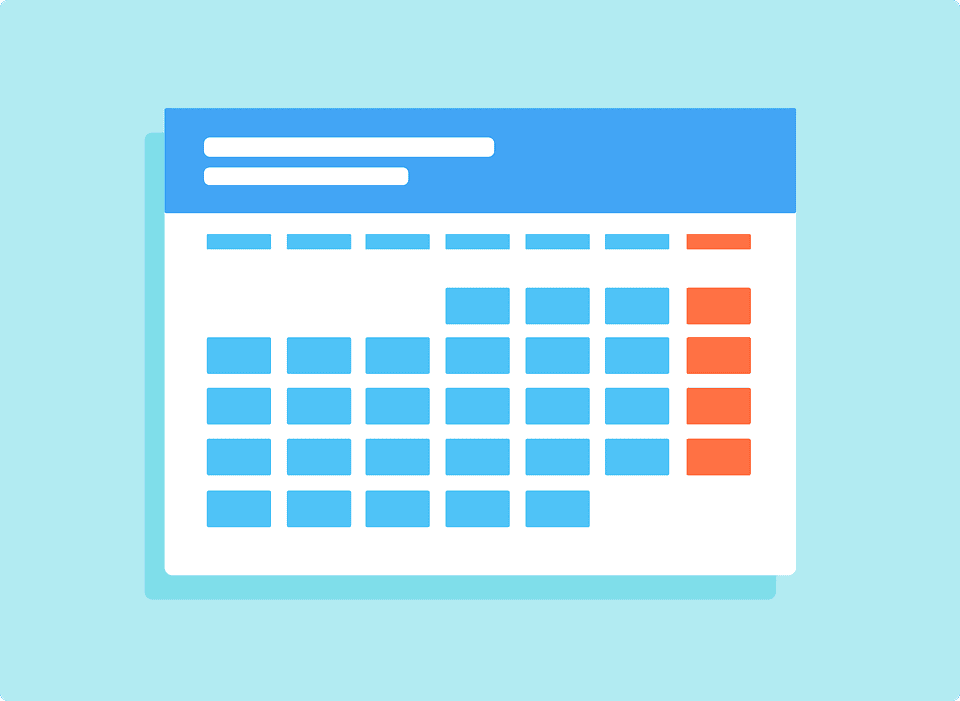One can hardly argue with the fact that social networks, especially Facebook content marketing, play an essential role in the promotion of any business. And the basis of such a promotion is content. So if you now have a question about what the content on Facebook should be, you’ve come to the right place. This blog post will tell you everything about content marketing and all its meanings.
A New Look at Facebook Content Marketing
In the 21st century, every Internet entrepreneur knows that Facebook is the # 1 social network in the world. Today it has more than a billion users. And 70% of them are subscribed to business pages. So this is a strong argument in favor of working with this channel as part of a marketing strategy. Even if you sell a reasonably inexpensive product, your target audience is most likely on this social network.

URL: https://cdn.pixabay.com/photo/2013/01/29/09/52/facebook-76536_960_720.png
Among all the most prominent social platforms in the world, Facebook offers the most comprehensive advertising opportunities. Business owners get various ad solutions that allow them to interact with their audience effectively. For example, Facebook enables companies to place ads targeted to a specific audience in the user’s news feed, show it in the mobile app, promote videos, and many other helpful business options.
In a nutshell, the ad campaign here targets specific user characteristics, allowing you to target your ads to your audience as accurately as possible. And the audience, in turn, should receive quality content from you. So first of all, you need qualified and experienced writers, which you can easily find on Rated by Students, where the best writing services reviews are collected.
Audience and Сontent

URL: https://cdn.pixabay.com/photo/2014/12/11/08/08/customer-563967_960_720.jpg
Before creating content for social media, it is essential to understand the target audience. According to Statista, 56.6 % of Facebook’s audience are men, and 43.4 % are women. In addition, experts claim that these users are characterized by a high degree of professionalism; among them are public figures, business people, designers, architects, and IT specialists.
The age segment here ranges from 25 to 55 years old, and users’ social status is above average. In most cases, they have an active life position, interested in politics, business, sports, and culture. Moreover, Facebook lovers are not afraid to express their opinions. Usually, these people passionately discuss topics of interest and actively seek out new contacts for their hobbies, business, culture, and sports.
And here, it is essential to understand the purpose of Facebook ─ the exchange of exciting content. It correlates with the main requirement for this social network content ─ to be relevant and informative. It should be a transient response to newsbreaks, introducing readers to the latest information.
Content must catch the attention of the first word and from the second ─ fuel interest and hold the reader firmly in place with every line. You have to make users want to read the whole text to the end, express their opinions, and share them with their friends. Keep in mind that likes and reposts are what bring new followers to your page.
In addition, experts note the effectiveness of attracting a new audience with the help of simple surveys, tests, and flash games. As an example, in the final paragraph of this article, we’ll discuss the intricacies of using tests in a content marketing strategy. But, for now, let’s summarize what content users expect to see on Facebook:
✔️ Relevant (topical);
✔️ Sharp (provoking a discussion);
✔️ Impressive (it should be eye-catching with impactful slogans, photos, videos, images, and graphs).
Remember that social media content is not a monologue. It is a dialogue and building friendly relations with your audience. Humanity, friendliness, simplicity, and support are the main trends in communication with it. So even if you don’t have an answer to a person’s question — write that you’re working on it. The main thing is not to be silent.
Constantly think about audience engagement, ask people for their opinion, invite them to discuss something, and ask them for advice. After all, you want to offer your customers what they need. And people, in turn, will feel their value for your business and feel involved. Finally, consider your content quality and use Top Writing Reviews to find the best writing services reviews.
It All Begins With a Content Plan

URL: https://cdn.pixabay.com/photo/2016/10/23/17/06/calendar-1763587_960_720.png
A content plan is an important stage in developing a business page. First, you need to figure out what content your audience needs. Next, you must find your competitors, analyze them, and draw up your content plan. The plan “in mind” or the “perhaps today I will publish this article, and then figure it out” is unsuitable.
You must build a posting schedule and list all posts for at least a week. Better — for a more extended period. Regarding content on the business page, the most important thing is to write about what is attractive to our target audience. Consider that you can’t count on success if you don’t create valuable and helpful content.
But you should not avoid making your business page on social networks a “dump” of unrelated posts, even if they benefit your audience. Remember that it should have the main idea. For example, if you’re engaged in cooking macarons, make your Facebook page an online club for those who study this culinary art.
In addition, there should be logic in your posts. Some of them must be informative, entertaining, selling, and engaging. Everything in our world needs a structure, and if you write your posts as you want, the result will be appropriate. Thus, think about possible topics and content sections on the page.
To do this, you’ll need again to study the audience’s interests — read forums and specialized communities and see what works on competitors’ pages. Then, develop a weekly publication plan that you need to follow based on all this. If you’re experiencing difficulties at this stage, it makes sense to find top paper writing services, where you can find a specialist who can help you with the content plan.
Tips for Creating Content on Facebook

URL: https://cdn.pixabay.com/photo/2018/04/13/16/49/laptop-3317007_960_720.jpg
So don’t forget about the format of your content presentation. It can be articles, graphs, ratings, statistics, tests, reviews, or lists (for example, top 10 marketing sites, top 5 films about marketers, or top 7 most successful advertising campaigns). There should also be people on your page: experts, employees, and satisfied customers.
And they should speak: give comments, thank, talk about themselves, advise, and share experiences. Only in this case will the page be interesting for Facebook users. Of course, the startup’s social media page should contain posts about the business, its positions, new products, services, events, and promotions. The clients should know and understand your business well since only in this way can they trust you.
It is also necessary to entertain the audience on social networks. Funny videos, pictures with motivational quotes, congratulations on holidays, the beginning of the week, and seasons — think about how all this content can be presented on your page. And now, the most crucial question is how many posts to publish daily. So, the first thing to remember is not to post too frequently.
The maximum you can afford is three posts a day. By the way, some large companies have now switched to the mode — one post per day. Also, It would help if you also thought about packaging your information on Facebook: use stylish pictures and create infographics. Consider that visual design is a teaser, after which people want to open your post. Therefore, all your illustrations should be bright, juicy, and emotional.
Ideally, your visual materials must be in the same style to stand out in the feed and to be recognizable. To increase the coverage of your publications, tag the people you mention there, ask your friends and employees to put likes, write comments and share the posts. It’s important because if the post doesn’t receive a single like or share within a few minutes after publication, it goes down the feed.
And a few more tips for promoting content on Facebook:

URL: https://cdn.pixabay.com/photo/2016/03/31/23/23/communications-1297590_960_720.png
- Make a content plan for the week ahead since it saves you a lot of time;
- Before launching a paid promotion of a post, wait an hour or two to see how the existing audience will react to it;
- When advertising products, use high-quality images and focus on the benefits that people will get from their purchase;
- Study the official information on advertising. Yes, it will take time, but it allows you to get valuable information.
Tests and Games in the Marketing Funnel

URL: https://cdn.pixabay.com/photo/2017/06/29/05/29/quiz-time-2453148_960_720.png
An excellent way to make content marketing cheaper is to use all sorts of quizzes and games. Why do they work? Because people use social networks to find entertainment and to get rid of boredom. So it’s essential to understand when you’re doing ads and creating content on Facebook. And that’s where tests come in handy.
Moreover, tests make promotion much cheaper across channels and for various clients. A click on a test costs, on average, five times, sometimes ten times less than a regular banner where you’re trying to sell something. That way, you get a person interacting with the test very cheaply. With good text and design, about 80% of people reach the final page, and you get your USP (unique selling proposition) to the customer much cheaper than when you target the site.
Tests are about triggers, investments, and rewards. The customers spend time answering questions, and you reward them with new questions or feedback. In essence, the person invests their time to get results. For example, you can add authorization to the test on the first question.
That way, you get information about the customer simply by asking them to sign in via social media, and then you can send them to trigger messages. But keep in mind that it reduces conversion into further steps. You can also use the test to find important information about the customer (e.g., purchase budget) and then set up separate retargeting campaigns for different audience segments.
A Few Subtleties of Using Tests
✔️ The test should be about the user, not the product or brand. Remember that if you brand the quiz or insert a logo at the beginning, the conversion will drop by an average of 30%.
✔️ It should have no more than ten questions. Otherwise, people will get tired of taking it and won’t get to the end.
✔️ Each answer should be in a different design: a new illustration, preferably even a new color. This way, you additionally visually reward the person for answering the questions.
✔️ On questions 6-7, you can gently immerse the user in the problem your product solves to give an appropriate solution on the last page.
✔️ The essential page in the test is the result. Note that you can’t say, “Your score is 1/10. So you’re not too smart,” since it doesn’t work. People have little self-irony, so it’s better to tell the customer they have a lot of potential for success, and your product will allow them to unlock it.
✔️ The test result should be something people want to share on social media because, on average, every repost generates even more traffic and cheapens the remarketing base.
✔️ The product’s USP should be natively tied to the test result. Doing so increases the conversion rate of collecting leads or applications. You can also ask for a phone number or email on the same page.
✔️ And, of course, you must use marketing bullshit techniques on the results page. For example, “This test has already been completed by over 500 thousand people,” or “There are only seven units left. The promotion runs out tomorrow”. People around the world react well to FOMO (Fear Of Missing Out). Therefore, this feature in your Facebook content marketing strategy is worth considering.
Summing Up Facebook Content Marketing
The success of Facebook as a marketing tool depends not only on the aggressiveness of promotion but also on the depth of understanding of human emotions and consumer behavior. Thus, it is worth considering that using free advertising in the Facebook content marketing strategy is an important step to increase revenue and minimize costs that can lead to optimizing your future business profits.


